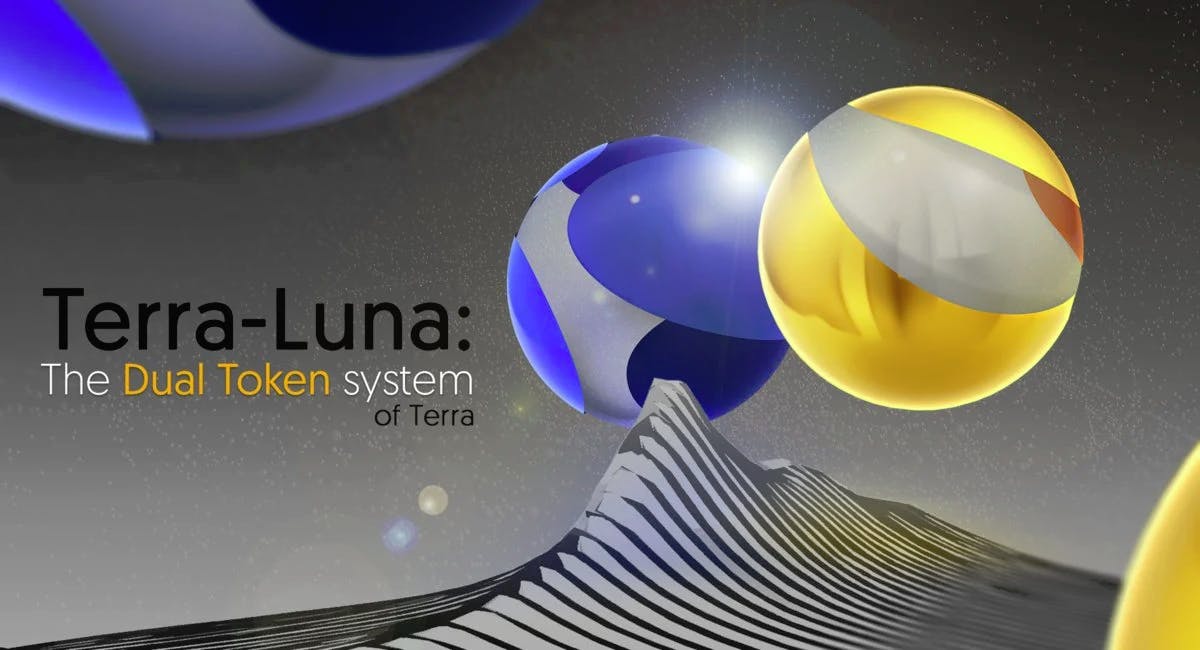
- All
- Tools
- Analytics
- Technical Analysis
- Trading
- Blockchain
- DeFi
- Guides
- Company News
- Educational
- Opinion
- Price Predictions
- Market News
- News
- Trading cases
- Practical guides
- Exchanges
- Trading signals
- Cryptocurrency
- Crypto bots
- Other
Become a crypto master
Learn everything about crypto,
trading and bots

A Primer on Cross-Chains
Start Trading on 3Commas Today
Get full access to all 3Commas trading tools with free trial period

Back in the early 2010s, many cryptocurrency (crypto) developers believed that they could provide a “one-size-fits-all” solution. Crypto enthusiasts planned to execute every aspect of blockchain technology, including transactions and smart contracts. Now, however, it is clear that such an approach is not practical, especially considering scalability constraints and innovation detours on the project’s path to success. In this case, cross-chains, or bridges between individual blockchains, come to the rescue and pave the way to improving the blockchain ecosystem.
What is a cross-chain?
To better understand the main principle of this phenomenon, consider the following example: every country has its own legal tender. United States dollars cannot be used in China, and the Chinese yuan cannot be used in the U.S. Currency systems are independent of each other and they share a similarity with blockchain ecosystems.. Without a cross-chain, bitcoin cannot be directly converted to ether because there is no interoperability between these protocols.
Interoperability between two or more completely different systems enables them to interact and exchange information with each other directly. In a traditional financial system, the problem of incompatibility between the different countries’ currency systems is solved by automatic money conversion. For example, you can use your credit card and pay for goods and services regardless of what national currency the store accepts. If you travel abroad with a card issued by your local bank, you know that it is accepted around the world regardless of the local currency. In the blockchain ecosystem, interoperability is when two separate blockchain systems can communicate with each other and exchange information.
The success of blockchain technology will depend on how blockchain networks can interact and integrate. For this reason, interoperability between blockchains is a concept by which intermediaries or third parties can be finally eliminated. Thus, the ability of different decentralized networks to interact with each other without intermediaries should be essential to create a fully decentralized system within the crypto market.
Forms of cross-blockchain interaction
There are numerous existing solutions and projects aiming to improve cross-blockchain interactions. This article will examine the most promising ones:
Centralized Interaction
Many centralized third-party solutions allow consumer to convert their crypto holdings to pay for goods or services immediately. But in this case, the problem of a trusted third party remains intact. A prime example of such a solution is the Binance Card from the famous cryptocurrency exchange. Essentially, a user can almost instantly convert crypto to fiat right at the payment terminal. Without the Binance Card this system will fail and create a challenge for the customer to pay with cryptocurrencies.
Atomic Swaps
Atomic swaps are a kind of value transfer mechanism which allows its users to convert their cryptocurrencies between blockchains in a peer-to-peer environment. Atomic swaps use a set of contracts called Hashed TimeLock Contracts, or HTLCs for short. These HTLCs help move value across different networks. With atomic swaps, there is no actual interconnection between the two networks, and the two parties agree to make a transaction that will move value across networks via a time-locked contract.
Nonetheless, there is one significant limitation with atomic swaps: both blockchain networks must have the same hashing algorithm and support the execution of HTLCs. Right now several blockchains use the same hashing algorithm. But most do not, making this solution a second option due to its applicability.
Wrapped Bitcoin (WBTC)
Wrapped Bitcoin ( WBTC) is another special kind of smart contract that provides interconnection between Bitcoin and the Ethereum network. WBTC is an ERC-20 standard token, pegged to BTC at a 1:1 ratio. The WBTC contract involves a third-party custodian that stores your BTCs and issues a certain number of WBTC tokens. If you decide to redeem your BTCs, the WBTC Factory has a feature called “burn,” which signals that the seller wants to “release” their BTC.
There are two major issues with the WBTC contract. The first is that it is limited to Bitcoin and Ethereum, and the second is that the project still relies on third-party custodians, which essentially brings us back to the problem of centralization. It is important to note that the custodian requires you to verify your identity by following KYC and AML procedures prior to issuing you WBTC.
Projects bridging the blockchains
Cosmos
Cosmos aims to become the “Internet of Blockchains” by enabling coordinated interaction between different blockchains. The Cosmos network is based on the Tendermint kernel and the Proof-of-Stake consensus algorithm. To achieve interaction between blockchains, Cosmos implements the Inter Blockchain Communication Protocol ( IBC). The Cosmos blockchain is based on Tendermint Core and consists of two parts:
- Hubs on the network act as the central ledgers for each of the individual chains, also called zones. Hubs are the ledgers for the token swapping between the zones.
- Independent zones: they can be run and connected to any external blockchain network, such as EOS or Ethereum. All communications between hubs and zones take place through a common IBC protocol. Similar to hubs, zones are also built based on the Tendermint protocol and are as easy for developers to use as launching an ERC-20 standard token.
The very fact that zones exist is due to the fact that each blockchain “speaks its own language,” and these zones act as a communication bridge between otherwise incompatible blockchains. This means that each external blockchain requires a separate zone to connect to the hub. The hub also acts as a decentralized exchange, where all tokens and coins get converted through atomic swaps, ensuring tremendous liquidity on the network.
The Cosmos blockchain uses native ATOM tokens to achieve consensus; the tokens serve as collateral for all nodes participating in the PoS consensus. If any PoS node is suspected of malicious activity, its staked ATOM tokens are burned and the node is removed from the network, making it a very secured process.
Fusion
Fusion is one of the most promising cross-chain interaction platforms, specifically designed to provide DeFi services. The startup’s founders have created a set of different products that offer unprecedented interoperability. The Fusion ecosystem also has a set of finance-related APIs that allow developers to build their own applications to interact with different blockchains. This feature will enable the next generation of financial innovation to become possible.
Fusion uses a new kind of consensus mechanism called Ticketed Proof of Stake (TPoS). The average Fusion block time is 15 seconds while the network can process up to 2,500 to 3,000 transactions per second. The project utilizes its proprietary technology called Distributed Control Rights Management ( DCRM). DCRM is a distributed storage of private keys on a network of nodes using segmentation. In the traditional storage model, keys are stored on a centralized server, which increases the likelihood of tampering. With DCRM, however, users’ secret combinations are segmented into shards and stored on a decentralized basis, making them virtually invulnerable to outside attacks.
Polkadot
Polkadot is a protocol and an ecosystem designed to build and connect different blockchains, enabling them to communicate effectively. At a higher level, Polkadot is similar to Cosmos; it implements a basic Relay Chain that connects to different blockchains via a Bridge Chain.
The main components of the Polkadot network are:
- Relay Chain is Polkadot’s main blockchain. It connects all independent blockchains in the ecosystem;
- Parachains are “parallel blockchains” that are built at the Polkadot level and run in parallel, just like the zones in the Cosmos network;
- Bridge Chains are blockchains that connect external blockchain networks, such as Ethereum, to the main Relay Chain;
- Validators are nodes, their role being to check the blocks’ validity and maintain consensus.
While Polkadot is similar to Cosmos in many ways, the project utilizes a different consensus mechanism and provides greater interoperability and interconnectivity by introducing a separate Bridge Chain. The transaction accumulation and verification process is also done separately, which yields greater speed and efficiency for transactions. The Polkadot network is supported by a native DOT token.
Conclusion
The problem of connecting crypto projects cannot be solved by a single project or platform, and we are yet to witness many new startups emerge in this area. Healthy competition will ensure successful cross-chain development and will increase many digital assets’ flexibility.
Disclaimer: The contents of this article are not intended to be financial advice and should not be treated as such. 3commas and its authors do not take any responsibility for your profits or losses after you read this article. The article has been presented to provide readers with general information. There is only personal experience described herein. The user must do their own independent research to make informed decisions regarding their crypto investments.

A proven leader, successful at establishing operational excellence and building high-performance teams with a sharp focus on value creation and customer success.





